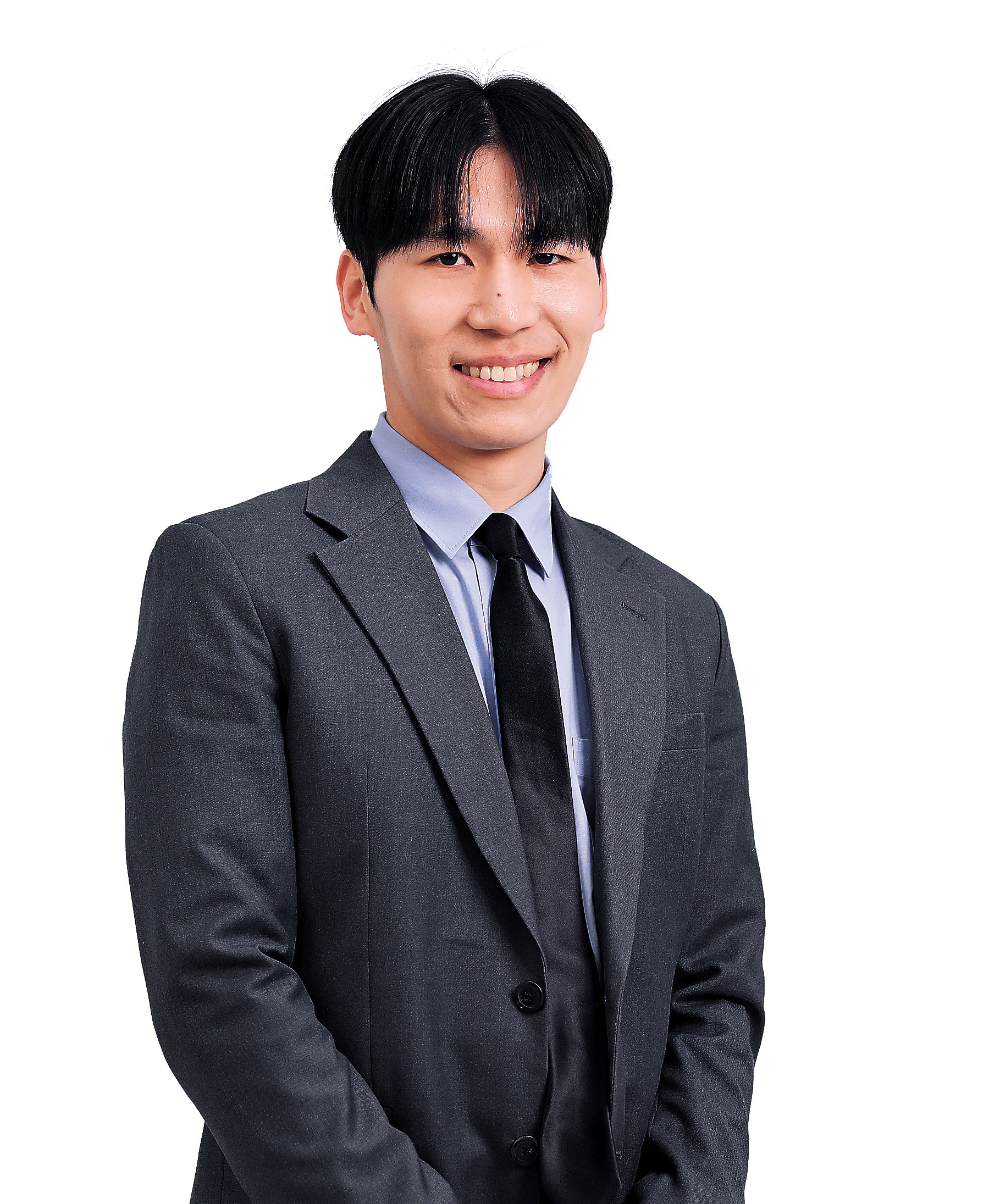[LLG] It's complicated: Our love-hate relationship with Seoul
Nine people share their feelings for a city that buzzes with 10 million lives
By Lee Sun-young, Shin Ji-hye, Song Seung-hyun, No Kyung-minPublished : Jan. 2, 2024 - 15:24
It is the pulsating heart of everything – from business and fashion trends to education and culture. Seoul's dynamic energy is infectious, drawing people from all corners of the country and beyond.
Yet, the city is also a place where life is often consumed like a commodity, where the pace of life operates in overdrive.
We asked nine people whose lives have intersected with the city what Seoul meant to them.

A family’s ticket to wealth
Kim Hee-yong’s move to Seoul 1 1/2 years ago with her family was primarily an investment decision.
"My husband, being from Seoul, has witnessed firsthand the wealth generated by the home redevelopment boom that began in the early 2000s,” said Kim.
Since marriage, the couple had been saving to buy a Seoul home and finally managed to acquire a property in the northern part of the city, where there were still development opportunities.
The reality of life in Seoul, however, sometimes tests their resolve to stick around for the next boom.
"The image I had of Seoul before seemed limited to Gangnam and commercial districts," she said. Gangnam, which translates to "South of the (Han) River," is Seoul’s upscale, modern center, where wide avenues are lined with gleaming skyscrapers and designer boutiques.
But the area Kim lives in has a lot of older buildings. Parking spaces and playgrounds for children are hard to find. Alleyways are narrow and unsafe.
Her biggest concern right now is the route to school for her boy, who is in the third grade of elementary school. It’s only a five-minute walk, but there are three sets of traffic lights to cross.
"Had I stayed in Suwon, (a city in Gyeonggi Province) I could have lived in a much larger apartment in a safer environment. However, I find comfort in the belief that Seoul would never fall behind Suwon in terms of home prices in the long term," she said.
Epicenter of K-pop
A graduate student from Japan living in Busan, Jinnouchi Fumina is a passionate fan of the Korean boy band DKB.
She frequents the heart of K-pop, the capital of South Korea, especially when there are events and concerts featuring her beloved idols.
“Seoul represents my commitment to 'deokjil' over my favorite K-pop group," she said in Korean. The Korean word, "deokjil," means being an intense fan of, or getting really into something or someone one loves.
“During DKB’s comeback seasons, I attend music shows to watch their live performances, and try to catch glimpses of the members before and after music programs at broadcasting studios," she continued.
Not just that, Seoul offers opportunities to purchase merchandise from pop-up stores and connect with other K-pop fans, for example to celebrate singers' birthdays.
Although she is only an occasional visitor to Seoul at the moment, Fumina wishes to become a Seoulite by landing a job here.
“I know many Japanese people working and doing deokjil in Seoul at the same time,” she said.

Reflecting on a lifetime in Seoul
Seoul has been Kim Hae-jung’s home for her entire life.
When she was a little girl, the city was a different place. Many people lived in makeshift houses made of wood and plastic panels. The south bank of the Han River was just a vast expanse of mud. Her elementary school taught students in three shifts per day, with 70-100 students in each shift.
Yet, it held small joys for little ones like her. There was a stream to play beside and her house had a yard with cherry trees and tomatoes.
She thinks a defining moment in Seoul’s transformation was the 1988 Seoul Olympics.
“Before, there were hardly any tall hotels, but new high-rise hotels like the Hilton and Intercontinental were built for the Olympics,” Kim said.
“Seoul’s skyline suddenly became very tall.”
Born in Ikseon-dong and raised in Jeongneung, both in the northern part of Seoul, she settled in Gaepo, a district in Gangnam, in the mid-1980s after getting married.
In front of her house was a barren field, and a stream nearby was inhabited by salamanders. The area between present-day Gangnam and Yangjae Stations was a no man’s land before it turned into a giant construction site.
“When apartment buildings started to be erected in Gangnam, word spread that in those newly constructed homes, hot water flowed straight from the taps.”
Around the time Kim's child attended elementary school, apartment prices started to soar. People “flocked to apartment buildings, which were renowned for their quality of life,” contributing to the surge in demand and prices.
The real estate boom made Kim’s family richer, too.
Still, she can’t help but feel nostalgic about those days.
“In the past, there were many freestanding houses and vibrant places full of life, but my surroundings now are an endless array of apartment buildings,” she said. “Now, it is like I am planted in a neatly planned, sophisticated place that feels artificial.”
It is not just about the landscape. Old neighborhoods had their own stories of the people who lived in them.
“Now people talk about some new pizza place being good. Everyone rushes there. But after some time, it’s gone.”
She thinks spaces where people have known each other for a long time are disappearing.
“There's an old snack shop in one neighborhood that has been there for decades, but people are currently trying to redevelop that area,” she said. “Most likely, that shop will either close down or move to a different location. It's unavoidable because people want redevelopment."
Long-haul commuter dreams of moving to Seoul
Kim So-ra has been living in Anyang, Gyeonggi Province, since she got married early last year, but she doesn't feel she belongs there.
"I don't know anyone here," she said. “Seoul is not just where I work; it's also where I meet up with friends and hang out."
Her daily commute to her office takes a little over an hour by subway, sometimes taking an extra half an hour when trains are delayed.
"For my husband, the commute is only about 20 minutes. We chose this home with the idea that at least one of us could get home early," she explained.
And there was, of course, the budget issue. Homes in Anyang were more affordable than those in Seoul, with better living conditions for the same value, she added.
She initially believed that she could handle the long commutes. Before she got married, she lived in Bundang, also in Gyeonggi, where she had to take the bus to get to Seoul, often in the rush hour.
“Compared to Bundang, Pyeongchon (the Anyang town she lives in) is better because there’s a good subway connection.”
Still, the thought of how much of her life is wasted on the road is increasingly bothering her.
"I used to pass the time watching YouTube, shopping online, or even dozing off while standing," she shared. "But recently, I made a resolution to read for at least half an hour every day. So, I make an effort to read as much as possible, using e-book apps like Ridi."
“If my husband could find a job in Seoul, I hope to move to Seoul.”

For an ambitious young tax accountant, Seoul is the place to be
Kim Yeon-hong’s aspirations of becoming a tax accountant didn’t initially include leaving his hometown -- Cheongju, North Chungcheong Province.
When he prepared to take his very first step in the profession, after passing the state exam for the job license, he realized he had to move to Seoul.
"The profession requires six months of on-the-job training," Kim noted. "Unfortunately, in my area, there were no firms recruiting trainee tax accountants."
For the six-month apprenticeship at a Seoul company, Kim stayed in a room in an old villa in Nonhyeon-dong, Gangnam, paying a monthly rent of 820,000 won ($637), with a deposit of 750,000 won. His salary as a trainee was 1.87 million won a month.
Now, the rough patches are bygones and Kim plans to continue living in Seoul. As a tax specialist, Seoul is the place to be. The breadth and depth of career development opportunities are simply unparalleled elsewhere, according to Kim.
"After moving here, a sense of anxiety has crept in, that if I move back to the provinces, I might fall behind," he said.
'There’s no place like Seoul'
A Turkish national residing in Seoul, Adin Aysegul is looking for a job as a videographer.
She knows there aren’t many such positions for foreign nationals, and many of her acquaintances in the foreign community here have difficulty supporting themselves.
But she hasn't given up on living in Seoul just yet. Though it's hard to make a living here, it’s harder in other parts of Korea, Aysegul said.
Aysegul first landed in Korea in September 2019. When COVID-19 hit, she flew back to Istanbul, only to return to Korea six months later.
“I think the Seoul city government is making a lot of efforts to accommodate foreign residents like me. There’s also a well-established expat community, which is very helpful. It’s easier in Seoul to find information about meetups and job openings.”

A Seoul college equals 'success'
Born in Seoul, Kim Hyun-bin, not his real name, has lived with the city as a constant backdrop his entire life.
As he nears high school graduation, he sees life in Seoul as like a video game, in which there are levels to crack in order to keep playing and progress to the next round.
“The first priority for me is to get into a university in Seoul. Then there's the challenge of finding a job in Seoul, and ultimately securing my own place here," he said.
Getting into a Seoul university is no small feat.
Kim said that in his high school, only about five students per class get a place at a Seoul university.
"I am not considering any universities outside Seoul, because the top schools are all in the capital," he said.
As a high school senior, his day is long. He usually studies until midnight. During exam periods, he sleeps only 3-4 hours a night, perhaps less.
A freelancing nomad’s take on ideal vs. reality
Born in Gwangju and educated in Busan, Nah Joo-young began a new chapter of her life in the country’s biggest city five years ago. For three years, she worked at a company there before finally transitioning to the world of freelance marketing and the life of a digital nomad.
"These days, Zoom meetings work well," she said, boasting the newfound freedom in her work.
She works from diverse areas and regions, including Jeju Island, finding the greatest contentment when close to nature.
“When in Seoul, life runs at a fast pace with high intensity. But once you leave the city, things slow down, giving you a sense of leisure and tranquility.”
Nah said she hopes to settle down in a rural area. Crowded subways and rush hour traffic were major downsides of living in Seoul for Nah.
But she hasn't completely left Seoul behind just yet. She acknowledges the presence of quality jobs, numerous opportunities to meet people, access to information, and the opportunity to attend seminars and lectures. “Because there are many young people, I can easily engage with different communities.”

'I had my Seoul phase'
Young and ambitious, Kwon Min-jeong spent her 20s and early 30s in Seoul, away from her hometown of Busan. She grew professionally, evolving from an IT company employee into an English translator and interpreter with competitive qualifications.
But in her mid-30s, a sense of fatigue set in.
"The subway is overwhelmingly crowded, especially Line 9."
She often had to squeeze herself in amid the masses of entangled commuters, where she could hardly move.
Now, she resides in Ochang, North Chungcheong Province, a rural town with a population of about 68,000.
So far, living is good, she said. Commuting is hassle-free, housing costs are affordable and there’s good education for her child who is in the first year of elementary school. One thing she regrets is the lack of nearby cultural facilities, such as museums and college summer camps for her child.
Reflecting on her earlier years in Seoul, she said, "Seoul is an ideal place to reside when you're young. It pulsates with life, offering a vibrant atmosphere, countless social spots and an array of dining options.”
Standing for living, loving and growing, LLG goes beyond the realm of daily news, exploring the vibrant tapestry of modern life, as told by real people. -- Ed.




![[Breaking] Assembly passes motion to revoke martial law](http://res.heraldm.com/phpwas/restmb_idxmake.php?idx=644&simg=/content/image/2024/12/04/20241204050007_0.jpg&u=20241204011847)
















![[Today’s K-pop] Ive logs 300m views with ‘After Like’ music video](http://res.heraldm.com/phpwas/restmb_idxmake.php?idx=642&simg=/content/image/2024/12/03/20241203050093_0.jpg&u=20241203173544)